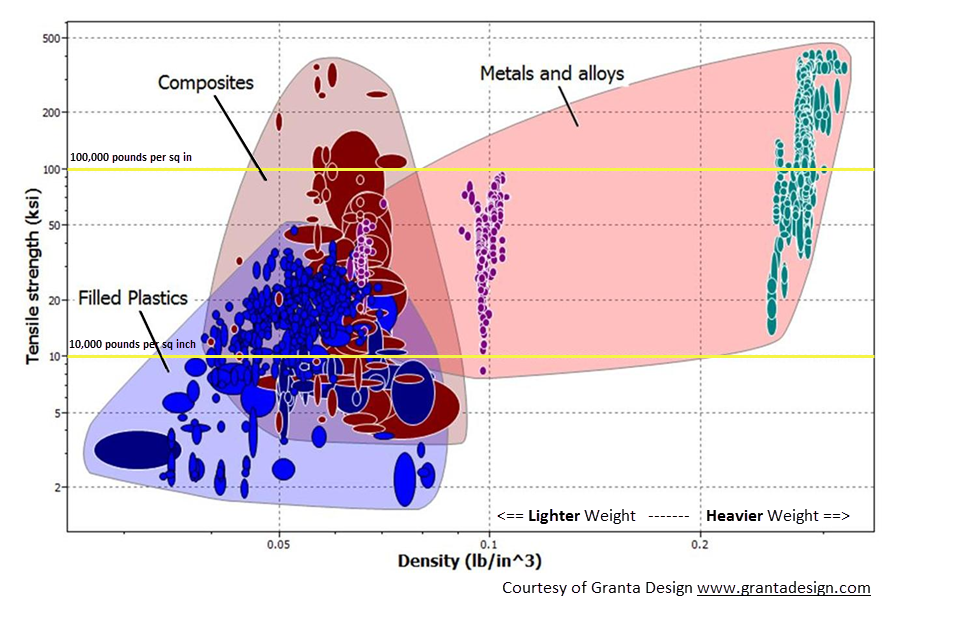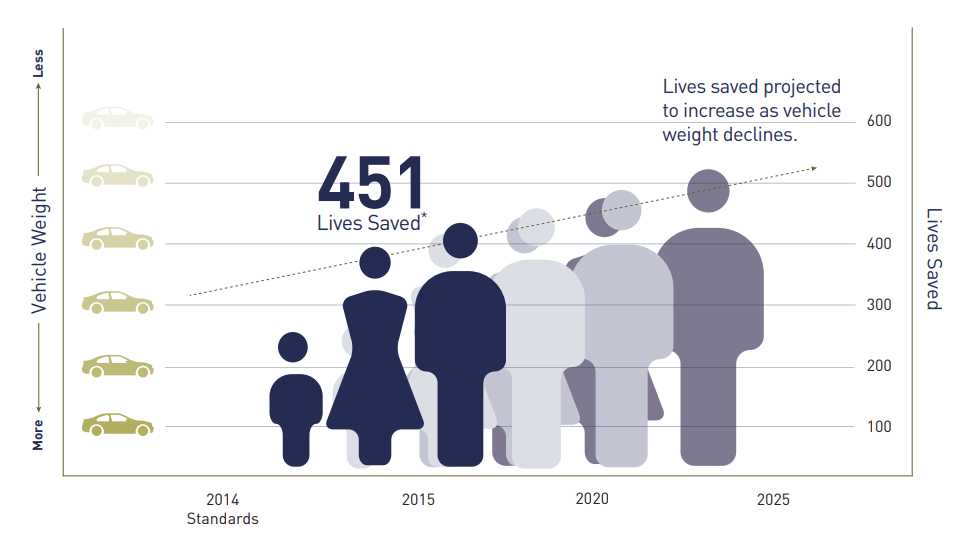Lightweighting in Cars: One Weird Chart That Should Convince Auto Makers
You’ve seen those online ads: “One Weird Trick That Always Works!” Well, we found one weird chart that really does deserve attention. With strict government CAFE standards requiring higher efficiency vehicles by 2025, choosing the right materials for automotive car parts is more important than ever. Automotive designers know that lightweight materials contribute to decreased vehicle weight and improved efficiency, and lower greenhouse gases. Many traditional metals are heavy, so the quest is on to find materials that deliver equivalent strength and safety but have the lighter weight to help achieve CAFE requirements.
Plastics and composites are changing the world for automobile design. Plastics can be compounded, filled with fiber or composited with carbon to be stronger and lighter than they were before – a perfect composition for efficient cars of the future. If you’re not convinced, focus on this one “weird” lightweighting chart.

KSI stands for kilo pounds per square inch, (thousands of pounds per square inch). That 100 line is 100,000 pounds of pressure in the tensile strength category. Yes, plastic car parts compete in tensile strength! Readers who have not kept up with material technologies of the last decade tend to think that metals are strongest. However, look between the yellow lines, and see all the comparable automotive materials that have tensile strength between 10,000 and 100,000 pounds per square inch of pressure! Notice how the lighter materials are on the LEFT. It makes one think we will be seeing filled plastics and composites as a material of choice in the decades ahead. Big thanks to Granta Design for providing this excellent look at the strength of material choices for automotive parts for today’s world!
Modeling Shows Automotive Material Lightweighting Saves Lives
New advocacy graphic demonstrates the roll of plastics and composite lightweighting in maintaining safety. Research shows that as cars lightweight, weight reductions alone can reduce traffic fatalities. More aggressive weight reductions than needed to achieve current proposed CAFE standards can save even more lives. Learn More
Interested in learning even more about lightweighting? Learn about the Department of Energy’s support of advanced-materials research for automotive lightweighting.

